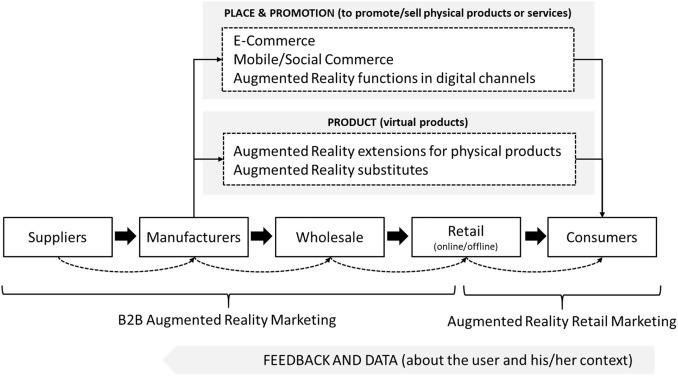Key Metrics to Track in Electronics Sourcing Performance

In the dynamic world of electronics sourcing, navigating the intricate web of suppliers, prices, and logistics can resemble a high-stakes game of chess. Each move requires careful consideration, and a misstep could ripple across supply chains, impacting timelines and bottom lines. But how does one ensure each decision leads to victory? The answer lies in the artful measurement and interpretation of key metrics.
Welcome to the age where data reigns supreme, guiding sourcing professionals as they chart their course through the complexities of electronic component procurement. As technology evolves at breakneck speed, so too does the need for a more refined approach to sourcing performance. Gone are the days of relying solely on intuition and experience. Instead, data-backed strategies provide the clarity and precision needed to maintain a competitive edge.
In this article, we delve into the essential metrics that sourcing experts must monitor to optimize their operations. From cost-effectiveness to supplier reliability, these indicators not only inform strategic decisions but also arm businesses against the unpredictable currents of the global market. We’ll explore how embracing these metrics can transform sourcing challenges into opportunities for innovation and growth.
So, whether you’re a seasoned procurement specialist or venturing into the vast world of electronics sourcing for the first time, this guide offers valuable insights to enhance your strategy. Let’s embark on a journey to decode the numbers and unlock the potential within your sourcing operations.
Table of Contents
- Evaluating Supplier Reliability and Responsiveness
- Optimizing Cost Efficiency in Component Procurement
- Ensuring Quality Control and Compliance Standards
- Leveraging Technology for Enhanced Data Insights
- Q&A
- Key Takeaways

Evaluating Supplier Reliability and Responsiveness
In the intricate landscape of electronics sourcing, establishing a partnership with a dependable supplier is crucial. Reliability and responsiveness are two pivotal metrics that determine the success of these partnerships. One approach is to evaluate the consistency of their delivery schedules. Consistent late deliveries can wreak havoc on production timelines, leading to costly setbacks. Additionally, it’s essential to consider their track record concerning product quality. Working with a supplier who frequently ships damaged or non-functional components can severely impair product reliability, increase return rates, and damage brand reputation.
Another vital consideration is the supplier’s ability to handle unexpected demand changes and urgent requests. A responsive supplier can significantly minimize disruptions by adapting to fluctuating demands without sacrificing quality. When assessing this, explore their history of accommodating emergency orders and adapting to changes in purchase quantities swiftly. This agility ensures that production lines remain active and efficient-keeping the supply chain robust. Responsive suppliers are often the backbone for maintaining a competitive edge in the fast-paced electronics market.
Communication is an often-overlooked angle yet plays an integral role in evaluating a supplier’s reliability and responsiveness. A supplier that maintains transparent and prompt communication can help in preemptively addressing potential issues. Enquire about their protocols for informing clients about shipment delays or alterations in product specifications. Understanding these aspects allows businesses like BrandName Electronics to align their operations more closely with supplier capabilities, leading to a more cohesive and efficient partnership. Moreover, establishing clear lines of communication can pave the way for more collaborative and innovative solutions to business challenges.
Optimizing Cost Efficiency in Component Procurement
In the complex realm of electronics sourcing, maximizing cost efficiency can spell the difference between profit and loss. One effective approach is to leverage supplier diversity, ensuring competitive pricing and reliable supply chains. Companies like BelTech Solutions have mastered this by building robust vendor networks. By fostering relationships across regions and industries, organizations can often negotiate better terms and conditions, achieving significant cost reductions.
Another strategic metric involves long-term partnership evaluation. Tracking and assessing the benefits of sustained supplier relationships can often reveal areas for further savings. Consider implementing automated tools to monitor ordering trends and compliance rates. Some key aspects to focus on include:
- Vendor lead times
- Order accuracy rates
- Discount eligibility
Understanding these elements can significantly enhance procurement efficiency, as seen at BelTech Solutions, a leader in strategic sourcing.
Adopting a technology-driven approach opens avenues for innovative solutions. The power of predictive analytics reveals itself in optimizing inventory management and cost assessments. For example, dynamic pricing models can be assessed through analytics to ensure competitiveness. Consider a table of potential metrics crucial for this strategy:
| Metric | Description |
|---|---|
| Forecast Accuracy | Measures demand prediction precision |
| Inventory Turnover | Evaluates stock usage rate |
| Cost Variance | Assesses budget alignment |
Harnessing these insights allows firms like BelTech Solutions to streamline their procurement process, ensuring that every penny is wisely spent. By integrating these strategies, businesses can position themselves for sustainability and growth in a competitive market.
Ensuring Quality Control and Compliance Standards
In the fast-paced realm of electronics sourcing, maintaining rigorous oversight of quality processes is a fundamental pillar for success. This involves adopting strict requirements that align with industry regulations and customer expectations. Implementing a blend of automation and manual checks can streamline procedures, dramatically reducing the risk of errors. Utilizing ISO-certified processes ensures not only adherence to standards but also enhances trustworthiness in the supply chain.
Key Focus Areas:
- Supplier Evaluation: Regular audits and performance reviews to ensure suppliers meet established criteria.
- Regulatory Compliance: Continuous updating of practices with the latest standards and certifications.
- Defect Rate Monitoring: Systematic tracking of production anomalies and implementing corrective actions.
To achieve excellence in sourcing operations, metrics for quality control should be diligently tracked. These include evaluating defect rates, examining delivery timelines, and assessing customer satisfaction scores. Here’s a quick look at relevant benchmarks:
| Metric | Target Value |
|---|---|
| Defect Rate | <1% |
| On-Time Delivery | 98% |
| Customer Satisfaction | >90% |
By using these metrics, companies like your brand can not only identify areas for improvement but also leverage them as strategic advantages. Cultivating a culture of continuous improvement, supported by robust metrics and standards, positions companies to excel in a competitive market. Embracing these strategies fuels innovation, ensuring that sourcing processes add exceptional value to the brand.
Leveraging Technology for Enhanced Data Insights
Q&A
Q&A:
Q1: Why are key metrics important in electronics sourcing?
A1: Key metrics serve as essential benchmarks for evaluating the efficiency and effectiveness of the sourcing process. They provide insights into cost management, supplier reliability, and overall supply chain performance, enabling better decision-making and strategic adjustments.
Q2: What is the first critical metric to consider?
A2: Cost savings is a fundamental metric. It measures how well the sourcing strategies reduce expenses compared to previous benchmarks or industry standards. Tracking cost savings helps identify successful negotiations and cost-effective supplier relationships.
Q3: How does lead time impact sourcing performance?
A3: Lead time, the duration from issuing a purchase order to receiving the goods, is crucial for planning and inventory management. Shorter lead times generally enhance supply chain agility and responsiveness, preventing production delays and reducing the need for large inventory buffers.
Q4: Can you explain the role of supplier quality in sourcing metrics?
A4: Supplier quality assesses the reliability and performance of suppliers in providing electronics components that meet specifications and standards. Higher quality levels reduce the likelihood of defects, returns, and production issues, directly impacting product quality and customer satisfaction.
Q5: What is the significance of the on-time delivery metric?
A5: On-time delivery measures the punctuality of supplier shipments. A high on-time delivery rate indicates reliable suppliers who meet deadlines, minimizing disruptions and facilitating smooth manufacturing processes.
Q6: How does risk management factor into sourcing metrics?
A6: Risk management metrics assess potential vulnerabilities in the supply chain, such as dependency on single suppliers or geopolitical risks. Evaluating these metrics helps in developing contingency plans and ensuring the continuity of supply under adverse conditions.
Q7: In what ways do sustainability metrics affect sourcing performance?
A7: Sustainability metrics evaluate the environmental and ethical aspects of sourcing practices. They involve assessing suppliers’ adherence to sustainable practices, which can enhance brand reputation and compliance with regulations, while also contributing to long-term resource availability.
Q8: Are there any advanced metrics that can be useful?
A8: Yes, metrics such as supplier innovation potential and lifecycle costs are advanced yet valuable. They provide insights into a supplier’s ability to contribute to innovation and evaluate total ownership costs, including maintenance and end-of-life considerations.
Q9: How should a company prioritize these metrics?
A9: Prioritization depends on the company’s strategic goals, industry demands, and specific sourcing challenges. A balanced scorecard approach can help align metrics with broader business objectives, ensuring focus on the most impactful areas for improvement.
Q10: What is the ultimate benefit of tracking these metrics effectively?
A10: By effectively tracking key metrics, organizations can enhance their competitiveness, foster resilient supply chains, and drive long-term growth. This holistic approach ensures that sourcing is not just a function, but a strategic asset contributing to overarching business success.
Key Takeaways
As the electrifying symphony of supply chains continues to evolve, understanding the key metrics in electronics sourcing is your compass in navigating this dynamic landscape. By honing in on the right indicators, businesses can orchestrate a harmonious balance of efficiency, cost-effectiveness, and innovation. With data as our guide and insight as our ally, let’s embrace the challenges and opportunities of electronic sourcing with renewed clarity and confidence. Here’s to informed decisions and brighter connections in the world of electronics.

